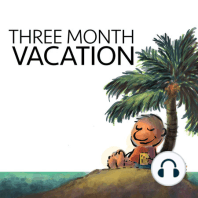7 min listen

How To Instantly Get Your Readers Attention-The First Fifty Words
How To Instantly Get Your Readers Attention-The First Fifty Words
ratings:
Released:
Nov 24, 2016
Format:
Podcast episode
Description
Which is the most frustrating part of an article? Yes, it’s the First Fifty Words. We get so stuck at the starting point when writing an article, that it’s almost impossible to go ahead. But what if there were not just one, but three ways to create drama in your article? That would be cool, wouldn’t it? Well, here you go. Not one, but three ways to start your article with drama and get attention. ====== In this episode Sean talks about—Three ways to get your readers attention. Part 1: The power of story Part 2: Disagreement with your premise Part 3: How to create intrigue with lists You can read it online here: 3 Ways To Create Instant Drama In Your Articles ========== In 1974, New York had a problem that didn’t seem to go away. No matter where you rode the subway in New York, there was graffiti painted both inside and outside the trains. Young men with their spray cans covered the city’s trains with their version of art and soon the subway came to be seen as a symbol of a city on its way to the gutter. The city put up security fences, razor wire and brought in guard dogs They even went through one amazingly misguided strategy to paint all the trains white. Sure enough, The Great White Fleet as they called it, was soon covered with a fresh layer of graffiti. The city couldn’t seem to think of any way to solve the graffiti problem. Then along came David Gunn In 1984, Gunn was appointed as the president of the New York City (NYC) Transit Authority. Gunn had a track record of cleaning up subways in Boston and Philadelphia. Even so, the city of New York had been battling the graffiti problem for over a decade. What radical idea could Gunn implement that would turn back the clock to better times? As it turned out Gunn’s solution centered around a single idea The moment a train was bombed with graffiti, it was to be pulled over and painted. If a train car was being repaired, they’d ensure the car remained graffiti-free. If they found graffiti on a train overnight, the NYC Transit Authority would sweep in and repaint the train. Even during rush hour if they found a train had been “bombed”, they would pull it back to the yard and clean it up, so that the graffiti was nowhere to be seen. On May 12, 1989, the city declared victory over the city’s graffiti artists. Notice what just happened? You started reading this article to find out how to write the First Fifty Words. But before you knew it, you were transported back to New York, the subway and the graffiti dilemma. And the reason why you got to this point is because of the drama created by the First Fifty Words. When your article, presentation or webinar has a powerful opening, the client gets pulled along happily. And yet, it’s not always easy to know how to go about creating those First Fifty Words. So today, let’s take a look at three ways to create the drama. Method 1: The power of story Method 2: Disagreement with your premise Method 3: Lists Method 1: The Power of the Story In the 1980’s a persistent drought swept through the African Savannah. Watering holes dried up, food was scarcer than ever. Yet, one animal, the kudu, wasn’t affected as much. This is because the kudu can continue to get its nutrition from the hardy Acacia tree. Most other animals don’t tangle with the Acacia’s thorns, but the kudu navigates its way between the thorns to get at the juicy leaves. But suddenly dozens of kudu started dropping dead. When the kudu were examined, there seemed to be no reason for the deaths. They looked perfectly healthy and didn’t appear to be suffering from any malnutrition. However, the number of deaths soon soared into the hundreds, then into the thousands. Now we may believe that Africa is one vast open area, but in reality a lot of wildlife lives in vast ranches While it was devastating for the ranchers to see the kudu fall to the ground in heaps, they were also puzzled by the inconsistency of the deaths. On one ranch the kudu continued to thrive. On other ranches, their num
Released:
Nov 24, 2016
Format:
Podcast episode
Titles in the series (100)
Is The Four-Hour Work Week A Waste Of Time?: Why A Four-Hour Workweek Isn't What We Really Want by The Three Month Vacation Podcast